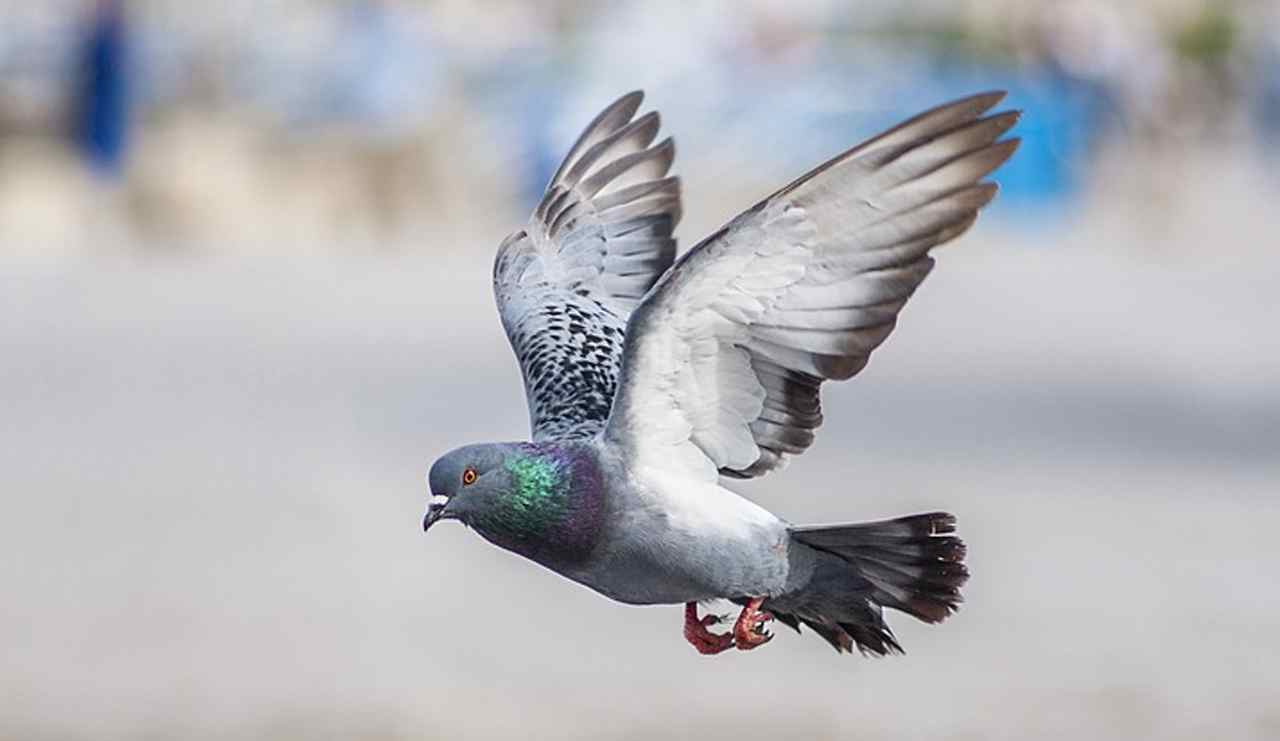Pigeons have an impressive and mysterious ability to find their way home over extremely long distances. Even when released hundreds of miles away, pigeons can still navigate back to their loft with astonishing accuracy. So how do these urban birds have such an uncanny sense of direction and location?
Pigeon Navigation Systems
Pigeons rely on a suite of sensory abilities and advanced mental maps to determine their travel routes and destinations. Some of the key navigation systems pigeons utilize include:
Magnetoreception
- Pigeons can detect variations in the earth’s magnetic field through small deposits of magnetic material in their beaks.
- This magnetoreception gives them an internal compass they use to maintain directional orientation.
Sun Position
- Pigeons use the location and movement of the sun to identify direction during flight.
- On cloudy days, they can still orient by sensing polarized light patterns in the sky.
Landmarks
- Visual recognition of roads, mountains, coastlines and other landmarks helps pigeons determine their position.
- They create detailed mental maps of terrain by observing features during flight.
Smell
- Scents and odors wafting from known locations like farms, forests, or cities can provide navigational cues.
- Pigeons have a highly developed olfactory bulb to process environmental smells.
Sound
- Familiar sounds from home lofts help pigeons locate their destinations, especially near the endpoint of a journey.
- Infrasonic sounds below human hearing may also assist with navigation.
Time
- Pigeons have internal circadian clocks and timers that track the arc of the sun and duration of travel.
- This allows them to anticipate locations at certain times of day during migration.
Together, these systems allow pigeons to follow programmed routes and correct for deviations along the way home. They provide both a compass and positional awareness.

The Mental Mapping Abilities of Pigeons
In addition to navigation systems, pigeons also possess remarkable mental mapping capabilities. These include:
Spatial Memory
- Pigeons remember specific landscapes and spatial relationships from aerial perspectives.
- They can rotate and rescale mental maps to achieve different navigation goals.
Route Planning
- Pigeons are capable of plotting direct or indirect routes between locations hundreds of miles apart.
- They can determine the most efficient paths home from unfamiliar release points.
Map Correction
- Pigeons update mental maps by noting discrepancies between expected and actual landmarks.
- This allows them to account for environmental changes over time.
Information Sharing
- Young pigeons learn navigation routes and points of interest from flying with experienced birds.
- This collective knowledge passes through generations.
Map Expansion
- Pigeons enlarge their mental maps by exploring new areas on flights away from their loft.
- Their navigational range expands over time as they incorporate more landmarks.
These advanced cognitive abilities allow pigeons to successfully return home from distant, unfamiliar places using deductive reasoning and logic.
Theories on Pigeon Homing Abilities
While much has been discovered about pigeon navigation, the exact mechanisms behind their impressive homing abilities remain debated by researchers. Some leading theories include:
Olfaction theory
- Homing pigeons rely primarily on their acute sense of smell to locate their loft from long distances.
- Environmental odors provide a scent map pigeons can follow over terrain.
Magnetic map hypothesis
- Variations in the earth’s magnetic field imprint on young pigeons to create a positioning system.
- Minor shifts in magnetism allow pigeons to calculate their location.
Infrasound theory
- Pigeons orient using very low-frequency seismic rumbles below the range of human hearing.
- These infrasounds emanating from their home loft act like a homing beacon.
Multimodal model
- No single factor accounts for pigeon homing abilities. Instead, multiple integrated senses combine to enable complex navigation.
- This includes vision, sound, smell, magnetic senses, solar cues, and more.
While the exact process is still debated, the consensus is that pigeons integrate multiple sensory inputs with learned environmental knowledge to navigate accurately over vast distances.
Pigeon Homing Abilities in Action
To illustrate their impressive navigational capacities, here are some examples of pigeon homing prowess:
- Pigeons raised in Montana released 400 miles away in Idaho were able to fly home, crossing the Rocky Mountains.
- Birds raised in England returned to their lofts from release sites in France across the English Channel.
- During WWII, pigeons dispatched from the front lines found their way back to bases hundreds of miles away.
- Champion racing pigeons can navigate courses between sites over 600 miles apart.
- On long journeys, pigeons average flight speeds between 40 to 60 mph sustained for hours.
- Homing success and speed are a blend of genetics, training, age and experience.
- If blown off course, pigeons can put their maps and compasses to use to recalculate their route home.
This combination of innate abilities with learned environmental knowledge enables pigeons to pull off incredible navigation feats over vast distances with precision and efficiency.
Why are Pigeons So Good at Finding Their Way Home?
Pigeons evolved remarkable homing and mapping skills because it provided them key survival advantages. Some evolutionary benefits of pigeon navigation include:
- Finding nest sites and food reliability over long seasonal migrations
- Returning to safe roosting spots and evading predators
- Reuniting with flock mates for collective safety
- Locating scarce water sources in arid environments
- Maximizing resource gathering from distant food patches
- Colonizing new areas by expanding ranging
- Achieving rapid escape from threats when displaced
The pigeon’s life history as a wide-ranging colonial animal that commutes vast distances to take advantage of patchy resources shaped the development of its superb directional, positional, and place recognition abilities over thousands of years.
Next time you see a pigeon winging its way with determination, remember it may have an embedded mental map that would rival Google! Their navigational skills are one of the many remarkable features of this familiar but underappreciated urban bird.
FAQ
Do pigeons have an excellent sense of direction?
Pigeons, indeed, have a keen sense of direction. They can find their way home over vast distances by combining optical and magnetic signals. According to certain research, pigeons can modify their trajectory depending on the Earth’s magnetic field, which may help them maintain a straight path while flying vast distances.
How did carrier pigeons know where to go?
Carrier pigeons, often known as homing pigeons, have an intrinsic capacity to navigate large distances and find their way home. They can do so by combining optical and magnetic inputs. They may, for example, utilize the sun or other landmarks to assist them to navigate, and they may also use the Earth’s magnetic field to stay on track. In addition to these inherent talents, homing pigeons are taught to identify certain landmarks and routes, allowing them to navigate unknown terrain and reach their destination.
What is the difference between a pigeon and a carrier pigeon?
The main difference between a pigeon and a carrier pigeon is that carrier pigeons are trained to return to their home roost or loft after being released at a distant location. In contrast, regular pigeons do not have this training. Carrier pigeons, also known as homing pigeons, are trained through a process called “pigeon racing” and are used to carry messages over long distances. On the other hand, regular pigeons are not typically used for this purpose.
Sources:
The Cornell Lab of Ornithology
American Psychological Association
- 2025 Texas Hunting Season: Latest Dates & New Laws! - March 14, 2025
- Maine Hunting Seasons 2025 New Dates & Limits - March 14, 2025
- Indiana Hunting Season 2025-2026 New Dates & Rules! - February 9, 2025




